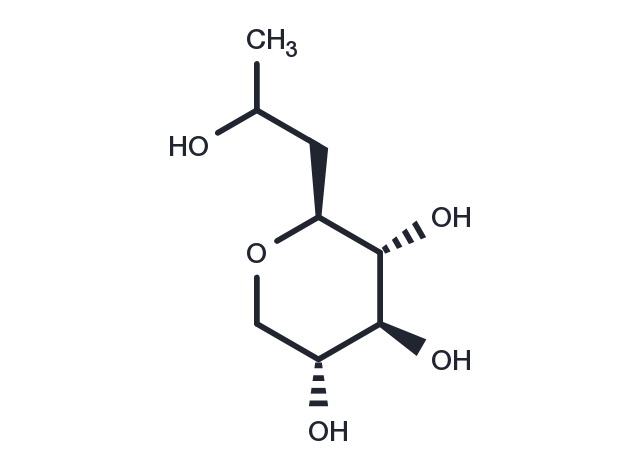Powder: -20°C for 3 years | In solvent: -80°C for 1 year


Pro-Xylane is a biochemical which induces neo-synthesis of matrix proteins. It is a biologically active C-glycoside in aqueous media, acts as an activator of glycosaminoglycans (GAGs) biosynthesis. Pro-xylane (Hydroxypropyl tetrahydropyrantriol) is the first example of 'Green' chemical used in cosmetic.

| Pack Size | Availability | Price/USD | Quantity |
|---|---|---|---|
| 5 mg | In stock | $ 50.00 | |
| 50 mg | In stock | $ 65.00 | |
| 1 mL * 10 mM (in DMSO) | In stock | $ 50.00 |


| Description | Pro-Xylane is a biochemical which induces neo-synthesis of matrix proteins. It is a biologically active C-glycoside in aqueous media, acts as an activator of glycosaminoglycans (GAGs) biosynthesis. Pro-xylane (Hydroxypropyl tetrahydropyrantriol) is the first example of 'Green' chemical used in cosmetic. |
| Synonyms | Hydroxypropyl tetrahydropyrantriol |
| Molecular Weight | 192.21 |
| Formula | C8H16O5 |
| CAS No. | 439685-79-7 |
Powder: -20°C for 3 years | In solvent: -80°C for 1 year
DMSO: 83.33 mg/mL (433.54 mM)
You can also refer to dose conversion for different animals. More
bottom
Please see Inhibitor Handling Instructions for more frequently ask questions. Topics include: how to prepare stock solutions, how to store products, and cautions on cell-based assays & animal experiments, etc.
Pro-xylane 439685-79-7 Others inhibit Pro xylane Hydroxypropyl tetrahydropyrantriol Proxylane Inhibitor inhibitor
